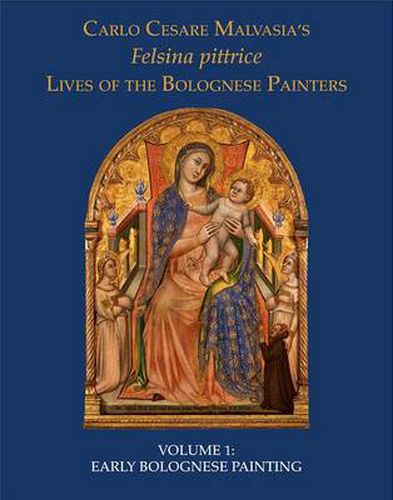Readings Newsletter
Become a Readings Member to make your shopping experience even easier.
Sign in or sign up for free!
You’re not far away from qualifying for FREE standard shipping within Australia
You’ve qualified for FREE standard shipping within Australia
The cart is loading…






This richly illustrated volume provides a translation and critical edition of the opening part of the Felsina pittrice, which focuses on the art of late medieval Bologna. The text is unusual in the context of the Felsina pittrice as a whole in that it seeks to record what survives in the city, rather than focusing on individual artists. In response to Vasari’s account of the Renaissance of painting in Florence, Malvasia offers a colorful and valuable portrait of Trecento painting in Bologna, noting the location and condition of destroyed or whitewashed frescoes, dismantled polyptychs, and paintings for which no other record survives. Malvasia provides crucial information on works by important fourteenth-century painters such as Lippo di Dalmasio, Simone dei Crocefissi, and Vitale da Bologna. Included in the volume are historical notes to the text and to the transcriptions of the Scritti originali, published here in their entirety for the first time. The notes enrich our understanding of individual works and identify the sources Malvasia used. Elizabeth Cropper’s introductory essay serves to establish the significance of Malvasia as a historian of art, while Carlo Alberto Girotto’s bibliographical essay analyses the production and reception of the Felsina pittrice as a whole.
$9.00 standard shipping within Australia
FREE standard shipping within Australia for orders over $100.00
Express & International shipping calculated at checkout
This richly illustrated volume provides a translation and critical edition of the opening part of the Felsina pittrice, which focuses on the art of late medieval Bologna. The text is unusual in the context of the Felsina pittrice as a whole in that it seeks to record what survives in the city, rather than focusing on individual artists. In response to Vasari’s account of the Renaissance of painting in Florence, Malvasia offers a colorful and valuable portrait of Trecento painting in Bologna, noting the location and condition of destroyed or whitewashed frescoes, dismantled polyptychs, and paintings for which no other record survives. Malvasia provides crucial information on works by important fourteenth-century painters such as Lippo di Dalmasio, Simone dei Crocefissi, and Vitale da Bologna. Included in the volume are historical notes to the text and to the transcriptions of the Scritti originali, published here in their entirety for the first time. The notes enrich our understanding of individual works and identify the sources Malvasia used. Elizabeth Cropper’s introductory essay serves to establish the significance of Malvasia as a historian of art, while Carlo Alberto Girotto’s bibliographical essay analyses the production and reception of the Felsina pittrice as a whole.